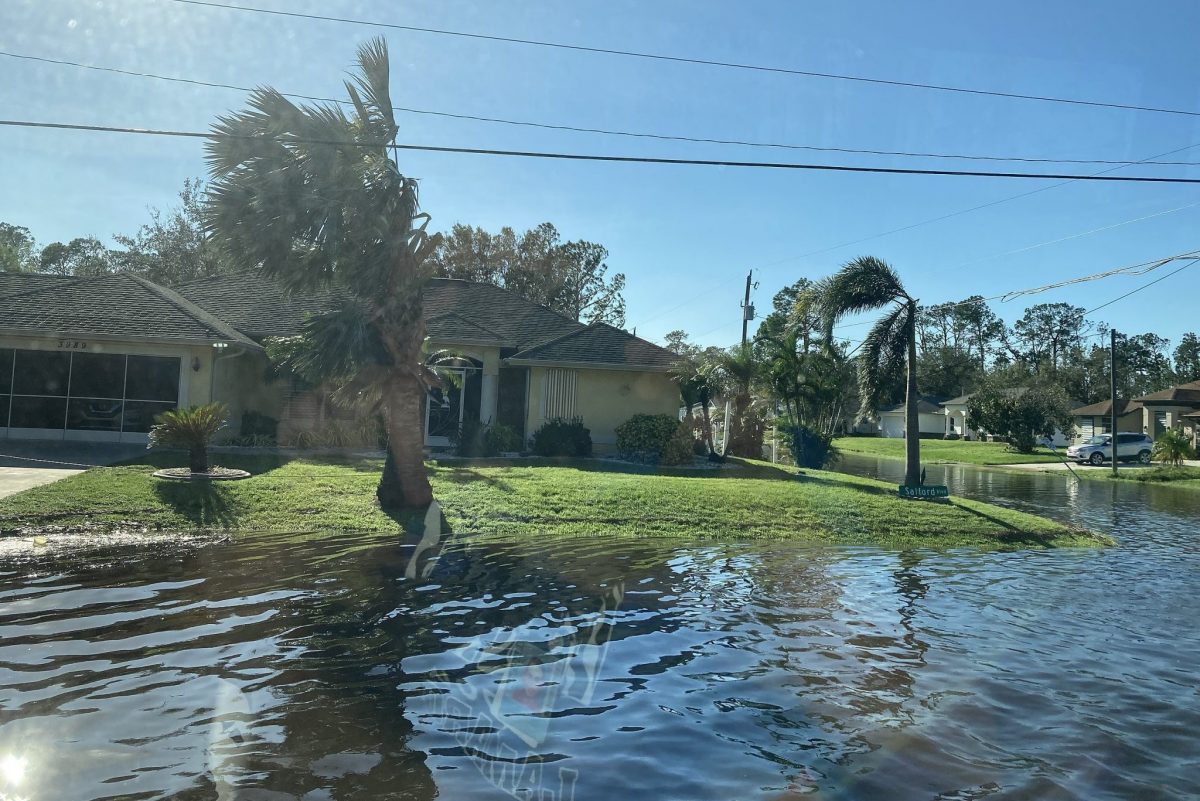Skift Take
Facing a disaster recovery expected to cost tens of billions of dollars, Florida's tourism sector awaits a long rebuilding process.
The largely innocuous but soggy remnants of Hurricane Ian drifted through Virginia early on Sunday, leaving in their wake storm-ravaged residents in Florida and the Carolinas facing a disaster recovery expected to cost tens of billions of dollars.
The storm’s toll on human life also was expected to rise as floodwaters receded and search teams pushed farther into areas initially cut off from the outside world, seeking stranded survivors and the remains of anyone who may have perished.
At least 50 storm-related deaths have been confirmed since Ian crashed ashore Florida’s Gulf Coast with catastrophic force on Wednesday as a Category 4 hurricane, packing maximum sustained winds of 150 miles (240 km) per hour.
Florida accounted for the bulk of fatalities, with 35 tallied by the sheriff’s office in coastal Lee County, which bore the brunt of the storm when it made landfall, and 11 other deaths reported by state officials in four neighboring counties.
North Carolina authorities said at least four more people had been killed there. No deaths were immediately reported in South Carolina, where Ian made its second U.S. landfall on Friday.
Chugging over land since then, Ian has diminished into an ever-weakening post-tropical cyclone, with the National Hurricane Center (NHC) lifting all remaining watches and warnings related to the fading weather system by Saturday evening.
The NHC said heavy additional rainfall was possible across portions of West Virginia and western Maryland into Sunday morning, even as “major to record flooding” was forecast to continue in central Florida.
Washed Away
As the full scope of devastation came into clearer focus days after Ian struck, officials said some of the heaviest damage was inflicted by raging wind-driven ocean surf that rushed into seaside communities and washed buildings away.
Satellite images from the National Oceanic and Atmospheric Administration (NOAA) showed beach cottages and a motel that lined the shores of Florida’s Sanibel Island had been demolished by storm surges. Although most homes appeared to still be standing, roof damage to all was evident.
Surveys from the ground showed that the barrier island, a popular tourist getaway that was home to some 6,000 residents, was left utterly devastated, from its infrastructure to its famously idyllic aesthetic character.
“It’s all just completely gone,” Sanibel’s city manager, Dana Souza, said. “Our electric system is pretty much destroyed, our sewer system has been damaged badly and our public water supply is under assessment.”
The island’s link to the mainland was severed by breaches to Sanibel’s causeway bridge, further complicating recovery efforts, Souza said.
After waning to a tropical storm by the end of its march across Florida to the Atlantic, Ian regained hurricane strength and pummeled coastal South Carolina on Friday, sweeping ashore near Georgetown, north of the historic port city of Charleston, with sustained winds reaching 85 mph (140 kph).
Numerous roads were flooded and blocked by fallen trees while a number of piers were damaged in that area.
Even as they confronted a staggering amount of utility repairs and debris removal, authorities were busy searching for the missing.
As of Friday, some 10,000 people were reported unaccounted for in Florida, according to the state’s emergency management director. He said many of those would likely turn out to have merely been displaced and unreachable due to power and phone outages.
On Sanibel, crews were just making their way to the hard-hit east end of that island on Saturday, “so our situation is that we’re still in the search-and-rescue mode,” the city manager, Souza said.
City officials were aware of nearly 300 households who failed to leave the island as the storm approached and whose whereabouts and well-being were now being checked, he said.
About 996,000 businesses and homes remained without power as late Saturday night in Florida alone, where more than 2 million customers lost electricity the first night of the storm.
In central Florida, heavy flooding from rain-swollen rivers and runoff appeared far more extensive than wind damage.
Insurers braced for between $28 billion and $47 billion in claims from what could amount to the costliest Florida storm since Hurricane Andrew in 1992, according to U.S. property data and analytics company CoreLogic.
(Reporting by Brad Brooks in Miami and Fort Myers; Additional reporting Jonathan Drake in Charleston, S.C.; Kanishka Singh, Sharon Bernstein, Makini Brice, Maria Alejandra Cadona and Juby Babu; Writing by Steve Gorman; Editing by Kim Coghill)
This article was written by Brad Brooks from Reuters and was legally licensed through the Industry Dive Content Marketplace. Please direct all licensing questions to [email protected].
The Daily Newsletter
Our daily coverage of the global travel industry. Written by editors and analysts from across Skift’s brands.
Have a confidential tip for Skift? Get in touch
Tags: florida, gulf coast, hurricane Ian, tourist attractions, virginia
Photo credit: Flooding and wind damage in Florida in the aftermath of Hurricane Ian. PCHS-NJROTC / Wikimedia Commons
